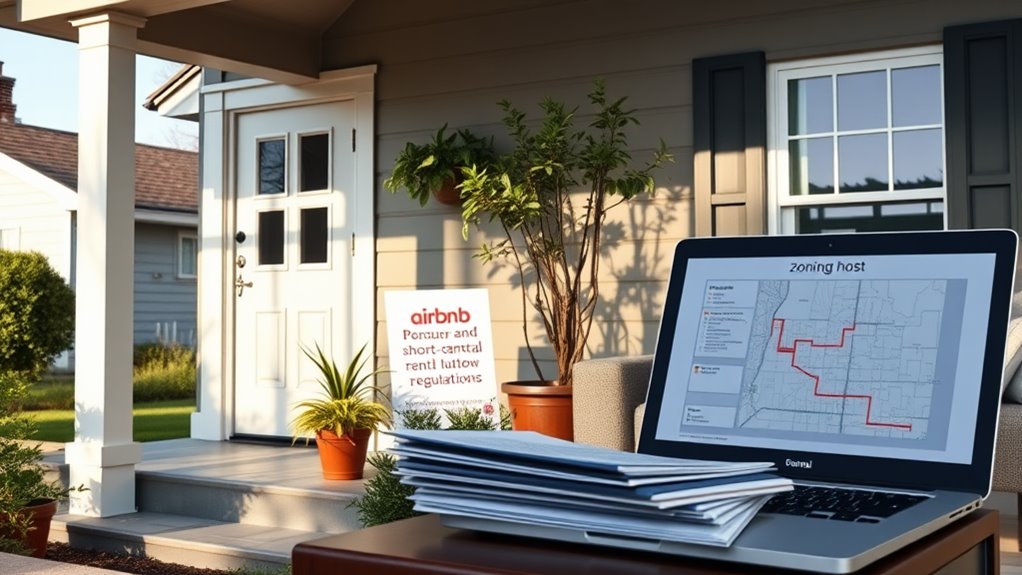Airbnb real estate investing can offer 2-3 times higher income than traditional rentals, with U.S. nightly rates averaging $278 in 2023. You’ll need to analyze local demand, implement dynamic pricing, and comply with strict regulations to maximize profitability. Hands-on management is essential, averaging 10-15 hours weekly for maintenance and guest interactions. Tools like AirDNA and Guesty streamline operations, while seasonal trends can optimize occupancy rates. Discover how to balance these factors for a successful investment strategy.
Key Takeaways
- Airbnb investments can yield 2-3 times higher income compared to traditional rental properties.
- Local regulations and permit requirements significantly impact Airbnb investment feasibility and profitability.
- Effective market research tools like AirDNA help analyze demand, occupancy rates, and pricing strategies.
- Seasonal demand and dynamic pricing strategies maximize revenue during peak travel periods.
- Hands-on management is essential for handling guest turnover, cleaning, and maintenance in Airbnb rentals.
Understanding Airbnb Real Estate Investing Basics
When considering Airbnb investing, you’re fundamentally purchasing properties to operate as short-term rentals, which can generate higher income compared to traditional long-term leases due to nightly booking rates. In 2023, the average nightly rate for Airbnb rentals in the U.S. was $278, showcasing the potential for significant cash flow. However, achieving a successful Airbnb requires thorough market research to identify high-demand areas with year-round tourist appeal. You’ll need to assess local regulations, as many cities impose restrictions on short-term rentals, impacting occupancy and profitability. Unlike the traditional rental model, managing an Airbnb investment property demands more hands-on involvement, including maintenance, cleaning, and guest interactions. Still, the reward is a higher income stream and the opportunity to leverage scalable passive income strategies. By strategically selecting rental properties in prime locations, you can maximize returns while mitigating risks associated with shifting market conditions.
Comparing Airbnb and Traditional Rental Properties
You’ll find Airbnb can generate 2-3 times higher income than traditional rentals, but its fluctuating demand requires active management and marketing. Traditional rentals offer stable monthly income with fewer operational demands, though their income potential typically remains lower. Regulatory challenges for Airbnb vary by location, while traditional rentals face more consistent, long-term legal frameworks. The rise of remote work is leading to longer stays in short term rentals, impacting both Airbnb and traditional rental markets.
Income Potential Comparison
Airbnb properties have the potential to generate considerably higher income compared to traditional rental properties, with average U.S. nightly rates at $278 in 2023, translating to annual earnings of up to $46,000 in high-demand markets like Los Angeles. In contrast, a traditional one-bedroom rental in the same area averages $2,630 monthly, yielding about $31,560 annually—a $16,000 income gap. Short-term rental models, like Airbnb, offer flexible pricing strategies, allowing you to capitalize on peak seasons and adjust rates dynamically, a feature unavailable in traditional rental agreements. However, Airbnb’s profitability fluctuates with seasonal travel patterns, while traditional rentals provide steady, predictable income. Real estate investors must weigh higher earnings against increased short-term rental expenses like maintenance and furnishing. Evaluating income potential is critical for strategic investing in property management. Understanding real estate finance is essential for making informed investment decisions that maximize profitability in both Airbnb and traditional rental properties.
Management Responsibilities
While both Airbnb and traditional rental properties require oversight, the management responsibilities differ considerably in scope and intensity. As an Airbnb host, you’ll face frequent guest turnover, demanding tasks like cleaning, maintenance, and managing check-ins/outs for each stay. You also handle bookings, respond promptly to guest inquiries, and navigate guest reviews, which adds to your workload. The average Airbnb host dedicates 10-15 hours weekly to these duties. In contrast, traditional rental management involves less interaction, as long-term tenants stay for six months or more, reducing maintenance requests and communication needs. Property managers for traditional rentals typically invest only a few hours monthly. You’ll also juggle regulatory challenges more often as an Airbnb host, staying updated on local laws, while traditional rentals operate under standard lease agreements with fewer complexities.
Regulatory Differences
Management demands aren’t the only factor that distinguish Airbnb from traditional rentals; regulatory environments also play a considerable role. Airbnb properties often face stricter regulatory frameworks, including requirements for short-term rental permits and annual rental limits, which traditional rentals don’t typically encounter. City-specific zoning laws can outright ban short-term stays, greatly impacting your investment’s feasibility. Additionally, transient occupancy taxes frequently apply to Airbnb rentals in high-tourism areas, adding to operational costs. Compliance with these evolving regulations requires thorough research and adaptability. In contrast, traditional rentals adhere to established landlord-tenant laws, offering more stability. When using an Airbnb investment calculator, factor in these regulatory complexities to assess potential profitability. Always verify local rental permits and zoning laws to confirm your investment strategy aligns with legal requirements.
Key Steps to Start Your Airbnb Investment

Starting an Airbnb investment requires a strategic approach to secure profitability and smooth operations. Begin by researching market demand and local regulations to identify tourist destinations with high occupancy rates. Use tools like AirDNA and Mashvisor to analyze property data, making certain your investment strategy aligns with the most profitable property type. Focus on locations with consistent tourist traffic, as these areas maximize returns. Tailoring your property to tenant desires can significantly enhance its appeal and occupancy rates.
- Choose the right property: Opt for a property in a high-demand area, equipped with amenities that appeal to your target guests.
- Enhance appeal: Invest in high-quality furnishings and professional photography to make your listing stand out.
- Create a compelling listing: Highlight unique features of the property and make certain transparency to attract bookings and maintain high occupancy rates.
Partnering with a trusted co-host can further reduce operational burdens and optimize your Airbnb investment’s success.
Evaluating Airbnb Investment Pros and Cons
Airbnb investment offers the potential for higher revenue compared to traditional rentals, with properties in the U.S. averaging $278 per night in 2023. However, you must weigh the pros and cons of Airbnb rental investing carefully. On the upside, investment properties can achieve a high occupancy rate, generating greater income than a traditional rental. Yet, operational costs are higher due to furnishing, frequent cleaning, and maintenance. Seasonal demand can lead to inconsistent cash flow, making financial planning more challenging. Additionally, regulatory challenges in many cities can limit your ability to operate short-term rentals, potentially reducing your property’s profitability. While the returns may be attractive, the competitive market requires strategic planning to stand out. Balancing these factors guarantees you make an informed decision about whether Airbnb investing aligns with your financial goals and risk tolerance.
Managing and Maximizing Your Airbnb Property

While the potential for higher revenue in Airbnb investing is clear, success hinges on optimizing your property’s management strategies. Efficiently managing your Airbnb property involves not only maintaining it but also leveraging tools and tactics to maximize bookings and revenue. Start by promptly responding to guest inquiries, as hosts who reply within an hour considerably boost booking rates. Use professional photography to enhance your listing’s appeal, increasing booking rates by up to 40%. Tracking rental market trends can provide valuable insights to adjust your pricing and marketing strategies for better performance.
- Dynamic Pricing: Implement dynamic pricing to adjust rates based on demand, which can increase revenue by up to 30%.
- Listing Updates: Regularly update your listing to reflect new amenities or local attractions, improving visibility on Airbnb’s algorithm.
- Guest Ratings: Maintain a guest rating above 4.5 stars to maximize occupancy rates, as travelers prioritize highly rated properties.
Exploring Seasonal and Market Trends in Airbnb
Understanding seasonal demand helps you identify peak periods—like summer and holidays—when occupancy and nightly rates surge. Market rate fluctuations often correlate with local events or tourism spikes, which greatly impact your rental income. Use data-driven tools to adjust pricing dynamically, ensuring you capture maximum revenue throughout the year. Incorporate rental market analysis to better understand trends and optimize your pricing strategy based on local demand and competition.
Seasonal Demand Analysis
As seasonal shifts influence travel patterns, it’s crucial to analyze how demand for Airbnb rentals fluctuates throughout the year. Seasonal demand peaks during summer and holidays, driving higher occupancy rates and nightly prices. Market research reveals that travel preferences have shifted toward rural areas, with a 110% increase in stays post-pandemic. Understanding these trends allows you to optimize pricing strategies and align property availability with peak periods.
- Location-Based Trends: Ski resorts thrive in winter, while Beachfront and Ocean View Homes peak in summer.
- Event-Driven Demand: Local festivals and attractions can greatly boost occupancy rates in specific regions.
- Adaptive Pricing: Adjust nightly rates during high-demand periods to maximize revenue, offering competitive pricing in off-peak times.
Strategic property investment in the short-term rental industry hinges on leveraging seasonal demand to enhance profitability.
Market Rate Fluctuations
Market rates for Airbnb rentals experience significant volatility, driven by both seasonal demand and broader market trends. During peak travel months, you’ll often see nightly rates double compared to off-peak periods, directly impacting profitability. Occupancy rates can swing from 80-90% in high season to as low as 30-50% during slower months, forcing you to adjust pricing strategies dynamically. The average daily rate (ADR) in urban areas can vary by $100 or more due to local market trends, such as events or holidays. To maximize earnings, monitor local market trends and competitor pricing closely, as these factors heavily influence your Airbnb properties’ occupancy rates and pricing decisions.
| Season | Average Daily Rate | Occupancy Rate |
|---|---|---|
| Peak | $200+ | 80-90% |
| Off-Peak | $100-$150 | 30-50% |
| Holidays | $250+ | 90%+ |
| Local Events | $180-$220 | 70-80% |
Legal and Regulatory Considerations for Airbnb Hosts

Before listing your property on Airbnb, you must navigate a complex web of local laws and regulations governing short-term rentals. As an Airbnb host, you’ll need to guarantee compliance with permits, zoning laws, and liability insurance requirements to avoid penalties. Many cities enforce strict rules, including caps on rental days or bans on rentals shorter than 30 days. Ignoring these legal considerations can lead to fines, ranging from hundreds to thousands of dollars, depending on the violation severity. Understanding the eviction process efficiency in landlord-friendly states like Texas and Florida can also help in managing tenant issues swiftly.
- Permits and Licenses: Most municipalities require permits for short-term rentals. Securing these upfront minimizes the risk of legal action.
- Zoning Restrictions: Verify that your property isn’t in a zone prohibiting short-term rentals. Violations can result in fines or forced closures.
- Insurance Coverage: Many areas mandate liability insurance to protect against guest injuries or property damage. Failure to comply can leave you financially exposed.
Guarantee you’re fully informed to operate legally and strategically.
Tools and Resources for Successful Airbnb Investing
Understanding legal compliance is only the first step; successful Airbnb investing also requires leveraging the right tools and resources to maximize profitability. Start with Market Research Tools like AirDNA or Mashvisor to analyze average daily rates, occupancy trends, and demand in your target area, guaranteeing you invest in the best Airbnb locations. Once you’re running an Airbnb, use Property Management Software such as Guesty or Hostfully to streamline bookings, guest communications, and cleaning schedules, optimizing your vacation rental’s efficiency. Employ Financial Calculators tailored for short-term rentals to project ROI, assess expenses, and determine profitability. Stay updated on Local Regulation Resources by reviewing city or county websites to adhere to licensing and zoning laws. Additionally, connect with other Airbnb investors through networking platforms like BiggerPockets to gain insights and refine your strategy. Regularly monitor economic indicators like employment rates and inflation to assess the health of the rental market and predict future trends. These tools guarantee a data-driven, efficient approach to achieving success in the competitive short-term rental market.
Conclusion
Dive deep into data to decide whether Airbnb aligns with your ambitions. Analyzing advantages against annual averages aids in evaluating its allure. Strategically securing properties in prime places promises peak profits. Master market movements to mitigate risks and maximize returns. Leverage local laws and lucid listings to legally legitimize your venture. Utilize updated tools to track trends and tailor tactics. Calculated, consistent commitments craft a compelling, cash-flowing career in Airbnb investments.




